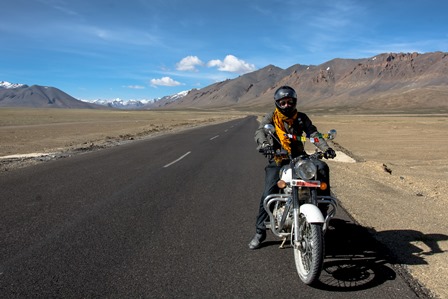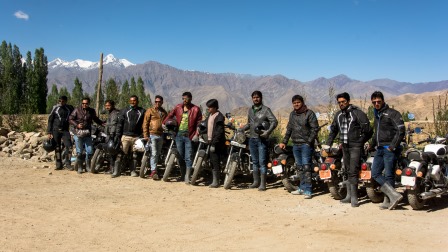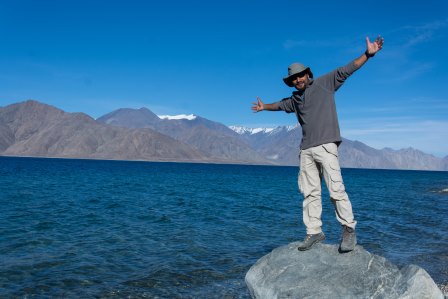Riding the Legendary Roads to:LADAKH !18-26 June 2016 |
||
Back to The Travelarium |
||
START STORY! |
||
About Ladakh
|
“Ladakh is a beautiful region located in the northern tip of India between Pakistan's Kashmir border and China's Tibetan Border. For many centuries, Ladakh was totally isolated due to the very high altitude of the Passes surrounding the region, and Leh, Ladakh's ‘Capital’, was only accessible to trading routes during a few months in summer. Today, and despite the new airport, Ladakh is still quite isolated, and there is only one road –open between May and October- linking India to Leh. This road is: -> The Legendary Manali - Leh Highway ! <- In June 2016, I decided to attempt the adventure and rent a legendary Royal Enfield Classic motorbike to ride the 485 awesome kilometres between Manali and Leh. Going through the many passes above 5,000 meters altitude, the water streams, the deserted valleys and the never-ending bends proved to be a fantastic and unforgettable challenge!" | ||
 |
 |
Itinerary |
 |
Royal Enfield |
|
 |
Riding Precautions |
|
The Itinerary -
Although there are only 485 km between Manali and Leh, it is recommended to do the trip in 3 days so that your body can get used to the Altitude, and so that you can get to truly enjoy the trip. For me, the adventure started by arriving in Delhi Airport on 17th June. Here is a tip for any traveller arriving in Delhi without pre-arranged transport: don't think! Just take the TRAIN to city centre!! From there you can get tuk-tuks easily, and avoid all the MANY airport scams. I arrived in the morning so I had time to visit the Red Fort, and do a bit of shopping at the Royal Enfield shop at Khan Market, the mandatory stop for all Enfield Fans! Buses to Manali leave in the afternoon (5:30pm) from Pilar 10 near Ramakrishna Ashram Marg Metro Station. Don't look for a bus stop; there isn't any... The only way is to find the stretch of road where lots of buses are "parked" along the road, and ask around for your bus. The night-trip takes 15 hours... Once in Manali, I met the awesome group of riders with whom I would have the privilege to ride to Ladakh; a young and dynamic bunch of guys from all over India! We also got to meet & get briefed by our fantastic guide Kirti and the expert mechanic Lakhan. Here is my riding itinerary. Feel free to contact me should you want contacts to do the trip! Meet the team!
And our Guide Kirti:
|
|||
Day 1 - 18th June
|
|||
 |
Itinerary |
||
 |
Royal Enfield |
||
 |
Riding Precautions |
||
Royal Enfield -History
|
||
Characteristics
There are today a few different models for Royal Enfields, but they come mostly in two categories; either the 350cc, or the heavier 500cc. The single-cylinders engine provides remarkable torque but tends to suffer in high rpm. Enfields are not designed to go much beyond 100 km/h, and it will vibrate and shake to remind you of this every time you attempt to do so!
|
||
 |
Itinerary |
|
 |
Royal Enfield |
|
 |
Riding Precautions |
|
Tips & Precautions -The Roads
|
|||
Altitude Sickness
|
|||
What to Bring If you ride by yourself, you will have to bring with you Bike spare parts and extra fuel! |
|||
 |
Itinerary |
||
 |
Royal Enfield |
||
 |
Riding Precautions |
||



